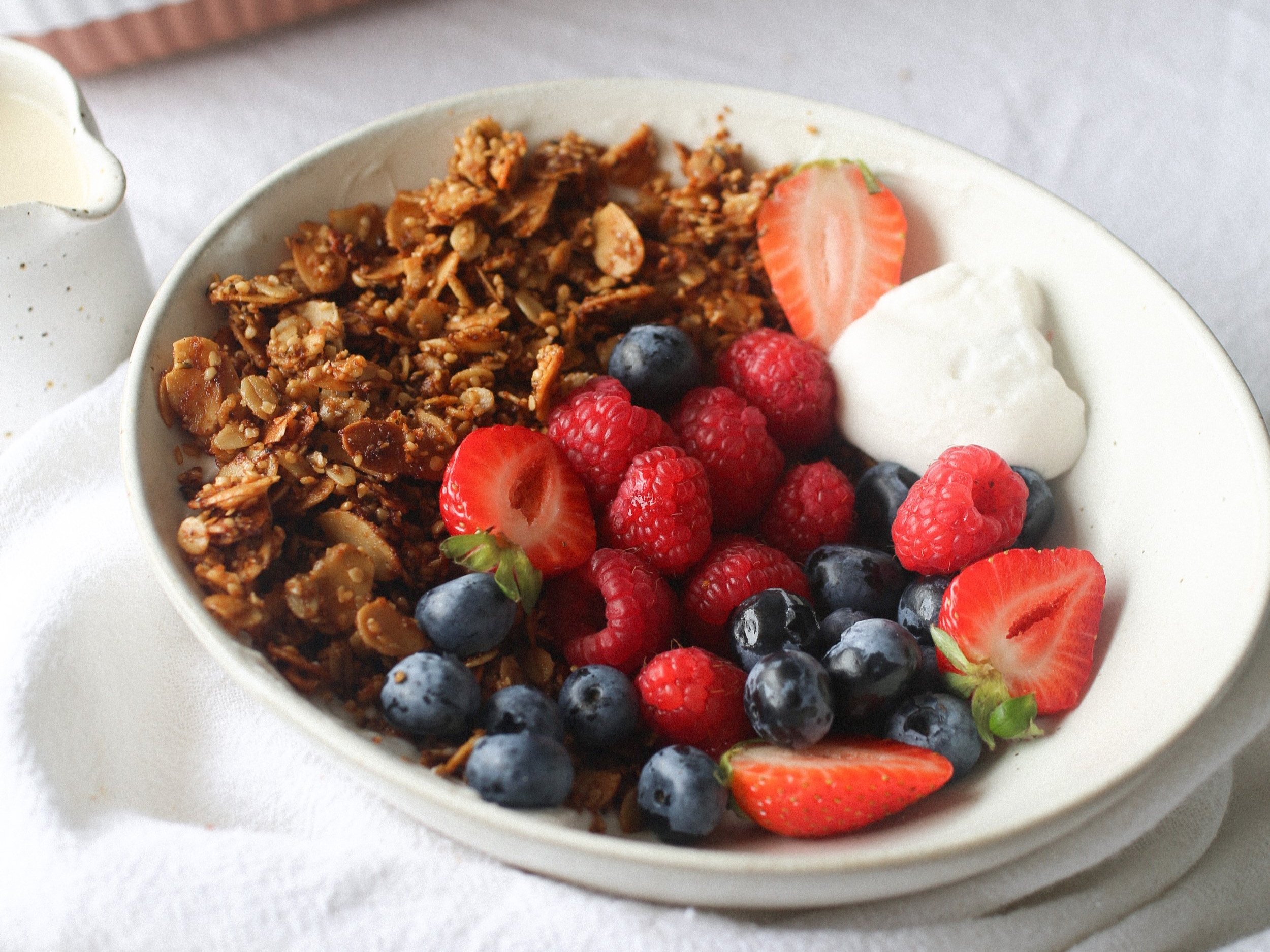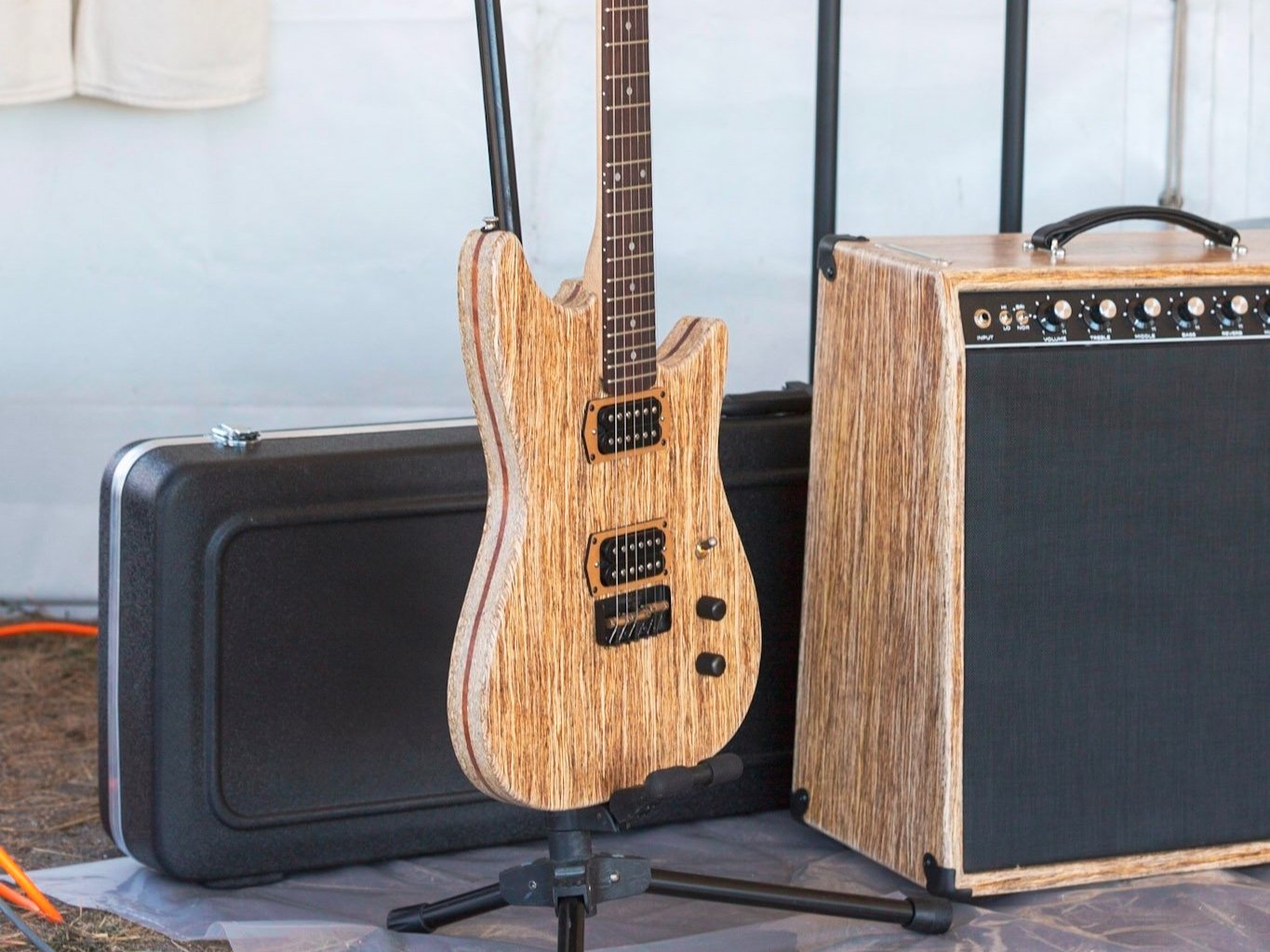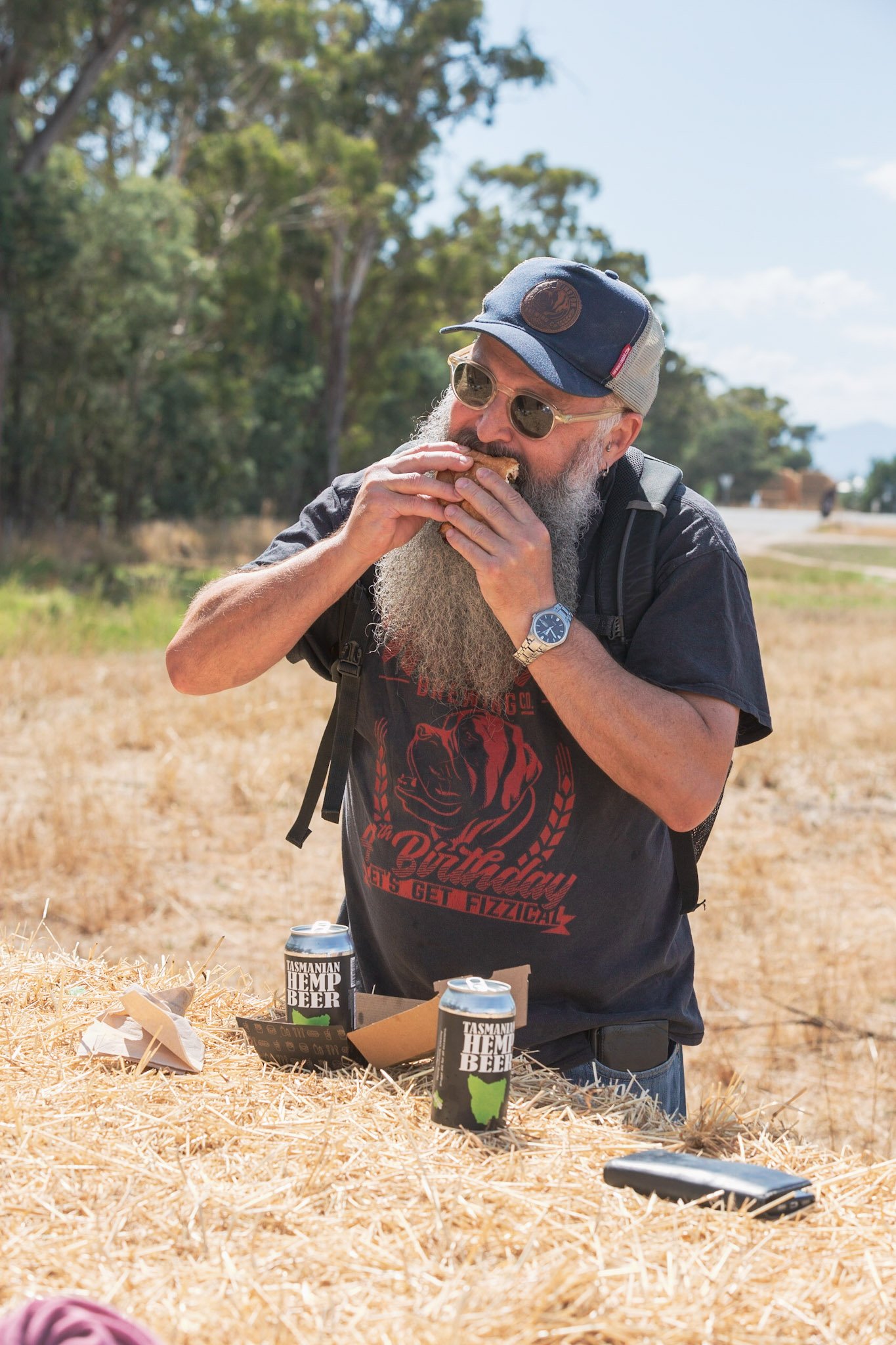Hemp is one of the world’s
most versatile plants
The hemp plant has played an important role in the development of civilisations for thousands of years, due to its multitude of uses as a broad therapeutic, nutrient dense food, and multi-purpose fibre.
It can be grown successfully without the intensive use of water and chemicals, unlike other crops, improves soil health, all whilst sequestering carbon from the atmosphere and storing it in the soil.
Tasmania is one of the most ideal locations to grow hemp, globally, due to the cool climate, long summer days, nutrient rich soils, and some of the world’s greatest farmers.
Food
Hemp seeds are harvested from the crop in a similar fashion to wheat and other grain crops, through the use of a combine harvester. They’re a rich source of protein, healthy polyunsaturated fats, gut-loving fibre, and contain a wide range of vitamins and minerals.
Processed hemp seeds come in a number of forms - hulled seeds (with shell removed), protein powder, oil, and flour. These can easily be incorporated a multitude of recipes, and help to bolster the nutrition profile of everyday meals.







Fibre & Hurd
The hemp stalks undergo a process called ‘retting’, where stalks are left in the field and microbes naturally decompose the ‘glues’ holding the stalk together. These are then mechanically separated into the two fibre constituents - bast fibre and hurd.
The bast fibre is the outer fibre of the stalk. It’s an incredibly strong natural fibre, more durable than cotton, which has anti-microbial properties. It can be used to make a range of textiles, paper, insulation material, and bio-composites.
Hemp hurd is the woody inner core of the stalk. Hurd contains a number of physical properties that are incredibly useful for use in industrial materials. It contains high levels of cellulose, is very absorbent, and is also rich in silica. It can be used for animal bedding, as a building material in the form of hempcrete, and used as in bio-plastics and other composite products.







Extracts
The flower and leaf from the low-THC industrial hemp plant are rich in a range of non-psychoactive compounds, which have a multitude of both therapeutic and industrial applications.
The medical uses of the plant are beginning to be recognised in modern medicine, thanks to their beneficial interactions with the body’s recently discovered endocannabinoid system. Which plays a role in regulating a number of physiological systems.
There are many other non-medicinal uses for biomass extracts from industrial hemp as well, such as: a functional food, nutritional supplement (similar to olive leaf extract or eucalyptus oil), skincare ingredient (similar to fucoidan or tea tree oil), bio-insecticides (similar to pyrethrum), and in anti-microbial textiles.







